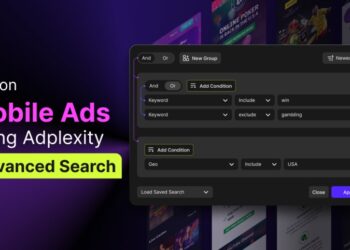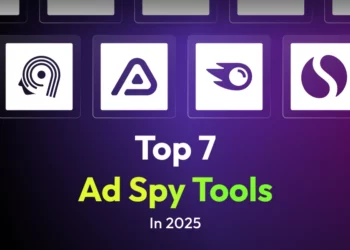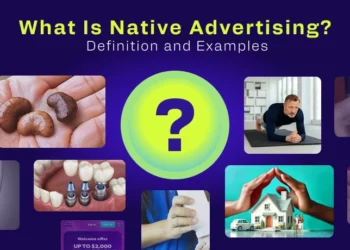Imagine this: you’re scrolling on Instagram or browsing a news website and an ad pops up that looks exactly like the campaign you’ve been working on for weeks.
It hits the same pain points, hook, and angle and has strikingly similar visuals.
Coincidence?
Probably not. In the world of digital marketing, your competitors are always watching and it’s time you return the favor.
Spying on competitors’ ads is no longer just about curiosity; it’s a strategy to stay ahead of the competition and market trends.
By analyzing your rivals’ advertising strategies, including their copy, visuals, targeting methods, and platforms, you can uncover what makes their campaigns work and use that knowledge to create ads that don’t just compete but dominate.
It is not cheating; this is playing smart. So, let’s get right to the top 3 easiest and quickest ways to spy on your competitors.
Key Insights in 30 Seconds
|
3 Easy Ways to Spy on Competitors’ Ads
- Use free tools (Facebook, Google, and TikTok ad libraries)
- Manual Search
- Paid ad spy tools
Let’s get into the free ways to spy on your competitors’ ads.
1. Facebook Ad Library
The Facebook Ad Library is powered by Meta, an online directory of all running ads across its family of apps and services, including Instagram ads. It was created to provide more transparency on ads that have a political or social nature.
Key Features:
Ad Transparency: With a simple search you can find all the ads your competitor is running but only on Facebook and Instagram.
Search and Filter: Users can search by keyword, page, or organization for specific ads.
Advertiser Info: Each clicked ad shows an array of information, such as the creative behind, the advertiser, the runtime of the ad, and the redirected page; all these help users understand who is behind an ad, plus its scope.
Ad Creative Viewing: You can see the creatives and copy utilized for the ad campaigns; this may be helpful in competitive analysis, inspiration, or keeping track of trends within advertising.
Here is an example:

The main disadvantage is that you need to already know the name of your competitor you are searching for.
Keyword searches will give you a broad range of results without advanced filtering options, making it hard to find ads unless you have an exact brand or page in mind.
2. Google Ads Transparency Center

Who better than Google itself knows what is happening with the ads around?
Google introduced the Google Ads Transparency Center, a way to gain transparency into the ads running on its platforms, including but not limited to Google Search, YouTube, and the Google Display Network.
Key Features:
Ad Transparency: The Transparency Center lets you explore ads running on Google platforms.
Search and Filter: you can look for certain ads or advertisers with the use of a few filters by the advertiser’s name, keywords, or topics of interest.
Ad Creative Information: It shows users the actual creatives used in ads for text, images, and videos. This helps in understanding the messaging of ad campaigns better.
3. Tiktok Ads Library

If you are into Tiktok ads then its ads library is a goldmine. TikTok has become the most used tool taking over the whole internet and changing the game, especially with the ads. TikTok made the UGC the way to go for ads.
Key features:
UGC, or User-Generated Content: The ads on TikTok involve using authentic content created by users. This helps in connecting the brands to their audience more effectively.
Ad Transparency: You can see ads from any brand currently running on TikTok. It shows the videos, text, and images they’re using in their ads.
Search & Filter: The ability to search by category and brand, and searching in either your niche or those of competitors will become so much easier.
Trends & Creativity: TikTok is all about trends, and the ads library helps you see how brands are using popular music, effects, and styles in their ads.
One downside is that you can’t see detailed information about who the ads are targeting or how well they’re performing. So, you can’t fully understand why certain ads are successful.
2. Manual Search
Manual Search can surprisingly be effective. What I mean by a manual search is this: when you are typing in a competitor’s name on Google, the search very often shows more than just the obvious results.
For example, if you were to search “Asana,” you’d probably see results for competitors or Monday.com who outrank Asana because of their paid ad.

The ad algorithm of Google sometimes spoils the search by showing you the paid ads from competitors, even if you were looking for just one brand.
That’s a great way to discover other active competitors and their ad strategies!
3. Use Ad Intelligence Tools
A spy tool is your go-to tool for uncovering winning ad strategies and gathering the insights needed to stay profitable and stay ahead of the competition.
One of the best in the game is AdPlexity. It’s been trusted by marketers for more than a decade and with good reason.
Adplexity does not just give you ads running but gives a complete picture of what’s working and where it works and, more importantly, how to apply those very same strategies to your campaigns.
That is what makes Adplexity versatile: its coverage across a range of different ad platforms. Let’s dissect its key branches to understand how it could help you:
Adplexity’s Key Branches
Native Ads
- Discover top-performing native ads across ad networks.
- Find ad creatives, publishers, and landing pages that are driving results.
- Filter by traffic sources, countries, and devices to find relevant insights to your needs.
Here is what a simple keyword search looks like in Adplexity:

Desktop Ads
- Analyze competitor ads running on desktop platforms.
- Identify which ads have the longest run times—a strong indicator of profitability.
- Access full landing pages to understand what offers and designs convert the best.
YouTube Ads
- Find Top Performing Ads: Find the best in your industry and find inspiration for your next ad campaign.
- Watch your competitors: keep an eye on their strategy, landing pages, and targeting
- Identify High-Converting Formats: Learn what type of video styles and placements drive results, turning views into profits. More conversions mean more money in your pocket!
The newest tool from Adplexity is their YouTube ad spy tool. You can search for profitable YouTube ads with a simple keyword search, or you can search by advertiser and channel. Here is a preview from “Search by channel”

Unlike Google Ads Transparency, Adplexity gives you the big picture of what your competitor is doing.
For example, if I want to check what Duolingo is running, with Adplexity I will be able to uncover all their landing pages, channel links tied to their ads, video ad creatives they’re using, countries where the ads are shown, and device types targeted by the campaigns.

Now, the same search in Google Ads Transparency got me barely anything useful but ad creatives with minimal information.
This is where Adplexity really stands out: it bridges the gap between surface-level insights and actionable data, empowering you to craft strategies that convert.

More AdPlexity Solutions:
- Mobile Ads: Explore mobile-specific campaigns and see what works for smaller screens.
- Push Ads: Discover notification ad creatives that drive high clicks and engagement.
- Adult Ads: Gain insights into a profitable niche segment often overlooked by marketers.
Final Thoughts
Staying ahead of the ad game isn’t just luck; it’s about strategy and tools.
Whether you choose free resources like the Facebook Ad Library and Google Ads Transparency Center, use organic searches, or even paid ones like Adplexity, the goal remains the same uncover what’s working, why it’s working, and how you can apply it to your campaigns.
It is all about the tools and the tactics. Mix insights, creativity, and the right strategies to make ad creatives look good, and convert.
Competition may be hard, but the right approach will always put you one step ahead.








